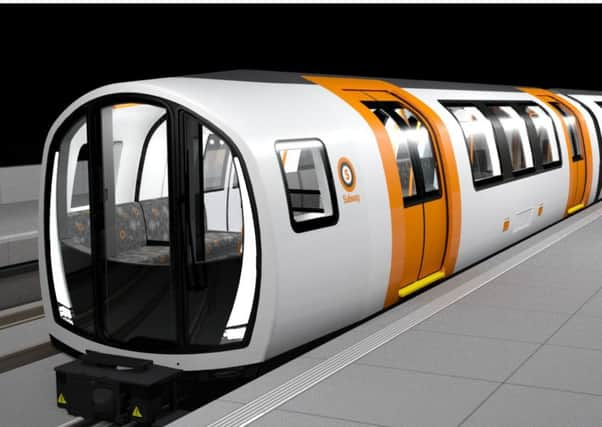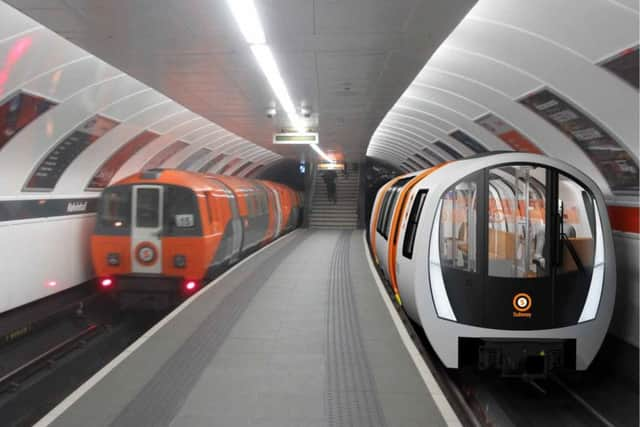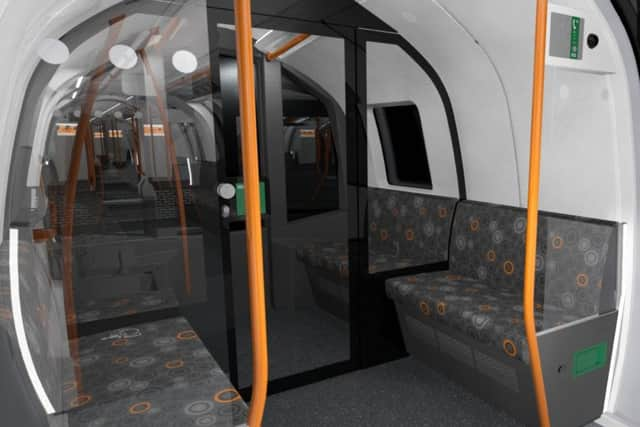Glasgow Subway trains first in UK to run with no staff on board


Operator Strathclyde Partnership for Transport (SPT) has previously announced that the trains would be driverless, but has now confirmed that no other staff will routinely ride in the carriages either.
The Unite union, which represents staff, has raised safety concerns. SPT said staff would be kept on the busiest trains, which will also be fitted with CCTV for the first time.
Advertisement
Hide AdAdvertisement
Hide AdThe new fleet will be unlike trains on other UK underground lines with no drivers, such as on the Docklands Light Railway in London which has on-board staff to operate the doors.


It is part of a £288 million overhaul of the Subway – the biggest for nearly 40 years.
The first trains are due to arrive for trials on a test track near Ibrox Stadium by the end of 2018 before entering service at the end of 2020.
They will initially operate with drivers on board, with full automation expected to follow in 2021 – the system’s 125th anniversary.
Charles Hoskins, SPT senior director with responsibility for the Subway, told The Scotsman: “We will always have staff in the system, but it is not our plan to have a member of staff on every train. These will be the first fully driverless trains in the UK.”


Such “unattended train operation” is already in use on some underground lines in Paris, Barcelona and Copenhagen.
Unite official Pat McIlvogue said: “SPT’s future vision involves a Subway system which is ticketless, with no counter staff, no staff on platforms and no staff on trains.
Advertisement
Hide AdAdvertisement
Hide Ad“If that is to be the case, Unite has to raise the issue of what happens when something goes wrong?


“So there are remaining health and safety issues that are being avoided. For example, does the SPT vision involve staff-less trains when the Subway is packed with fans going to Ibrox for a Rangers game?”
Mr McIlvogue also accused SPT of “continuing prevarication” over the future of drivers and said there must be no compulsory redundancies.
An SPT spokesperson said: “We are currently looking at how we might best utilise front-line staff following the introduction of the new system. Staff understand and accept that there will be changes to current working practices. However, safety and customer service will always remain a priority.”
Tunnels and signalling on the Subway’s six-mile loop are being upgraded to enable trains to run every three minutes – and up to every two minutes before and after football matches – compared to four minutes at present. They are also expected to operate later at night and on Sundays, boosting the current 13 million annual passenger journeys.


The Swiss-built trains for what is believed to be the world’s smallest-size underground system will have to be specially constructed as the railway’s gauge – the distance between the rails – is 20cm narrower than standard.
The trains will be open-plan, with no doors between their three carriages to maximise space. Windows at either end will provide views along the tunnels, enabling passengers to see historic features for the first time such as the disused Merkland Street station in Partick, which might be illuminated.
To maximise safety, screens will be built along the edges of platforms, like on some London Underground lines. These will only open when a train is alongside.
Advertisement
Hide AdAdvertisement
Hide AdThe 17 new trains, which replace 13 introduced when the Subway was last modernised in 1980, will provide space for the first time for wheelchairs.
However, there will only be lifts at St Enoch station in the city centre and Govan, and officials said it may prove too difficult to install them at all of the other 13 stations.
Virtual reality headsets will enable people to visualise the carriages before they are introduced. The technology has already been used by schoolchildren and there are plans to put it on show on the concourse at St Enoch.